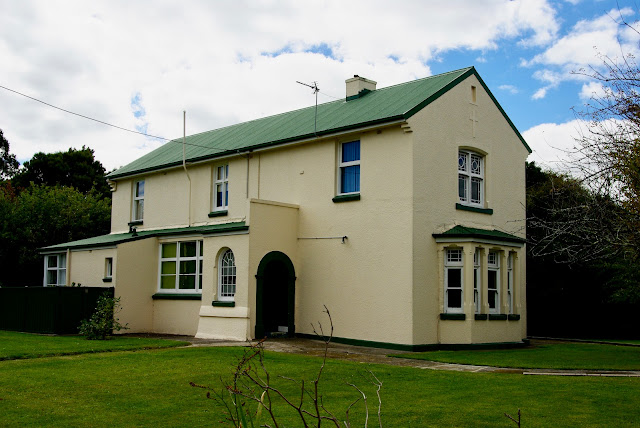No. 1098 - Latrobe - St Patrick's Presbytery (1879)
This entry is another in a series of articles concerning buildings associated with some of Tasmania’s most significant churches. These buildings include Sunday schools, parish halls, convents, schools and residences of the clergy. Ancillary buildings are often overlooked and are rarely featured in published histories. My aim is to create a simple record of some of the most significant of these buildings, including some which no longer exist.
Latrobe is a large country town situated between the Bass Highway and the Mersey River. It is named after a government administrator, Charles LaTrobe, who was acting Lieutenant-Governor of Tasmania for a a matter of months (1846-7). Latrobe was once an important port town with boats operating from Bells Parade until the Mersey River silted up.
St Patrick’s Catholic church opened in 1871. The church’s presbytery was built in 1879 by William Gadsby, who also built Latrobe’s Methodist church. In 1926 the building was slightly damaged in a fire. A second fire in June 1950 resulted in considerably more damage:
“A fire at the Presbytery at St. Patrick's Church, Latrobe, on Saturday evening did considerable damage to the roof and interior. It is a two storey structure, with an iron roof over shingles. At 6.30 p.m. a chimney caught fire, and evidently the heat set the shingles alight. About 9:30 the inmates heard a crackling sound, and realised that the building was on fire.
The brigade was called, but its efforts were hampered by the fire being under the roof. This necessitated the removal of iron and portion of the shingles. Part of the roof was badly burned, and water poured on the blaze caused considerable damage to the interior of the building. Every room in both- top and bottom storey with the exception of the bath room suffered damage. The water caused "shorts" in the electrical fittings, which also hampered the brigade. However, it made a good save.
Many willing helpers were quickly on the scene, and rendered fine service in removing furniture and fittings. Despite this, some of the furniture was badly damaged”.
Within a year the presbytery was restored at a cost of almost £4500. The “reconditioned” building was reopened and blessed by Archbishop Tweedy on Sunday 3 June 1951.
Latrobe is a large country town situated between the Bass Highway and the Mersey River. It is named after a government administrator, Charles LaTrobe, who was acting Lieutenant-Governor of Tasmania for a a matter of months (1846-7). Latrobe was once an important port town with boats operating from Bells Parade until the Mersey River silted up.
St Patrick’s Catholic church opened in 1871. The church’s presbytery was built in 1879 by William Gadsby, who also built Latrobe’s Methodist church. In 1926 the building was slightly damaged in a fire. A second fire in June 1950 resulted in considerably more damage:
“A fire at the Presbytery at St. Patrick's Church, Latrobe, on Saturday evening did considerable damage to the roof and interior. It is a two storey structure, with an iron roof over shingles. At 6.30 p.m. a chimney caught fire, and evidently the heat set the shingles alight. About 9:30 the inmates heard a crackling sound, and realised that the building was on fire.
The brigade was called, but its efforts were hampered by the fire being under the roof. This necessitated the removal of iron and portion of the shingles. Part of the roof was badly burned, and water poured on the blaze caused considerable damage to the interior of the building. Every room in both- top and bottom storey with the exception of the bath room suffered damage. The water caused "shorts" in the electrical fittings, which also hampered the brigade. However, it made a good save.
Many willing helpers were quickly on the scene, and rendered fine service in removing furniture and fittings. Despite this, some of the furniture was badly damaged”.
Within a year the presbytery was restored at a cost of almost £4500. The “reconditioned” building was reopened and blessed by Archbishop Tweedy on Sunday 3 June 1951.




Comments
Post a Comment